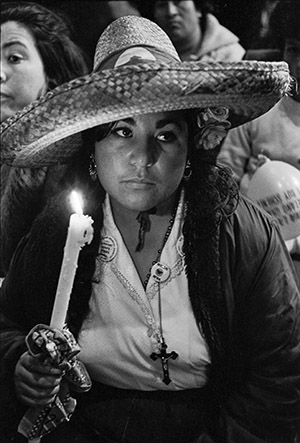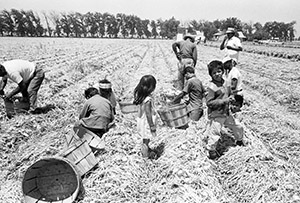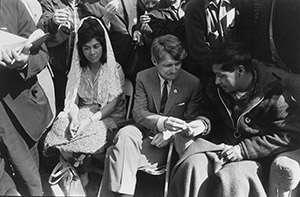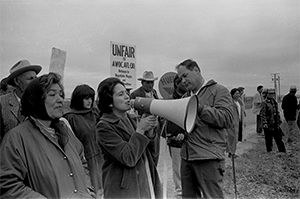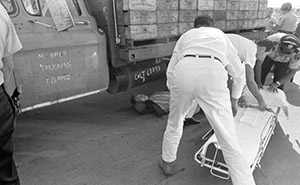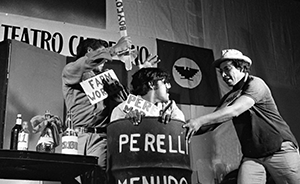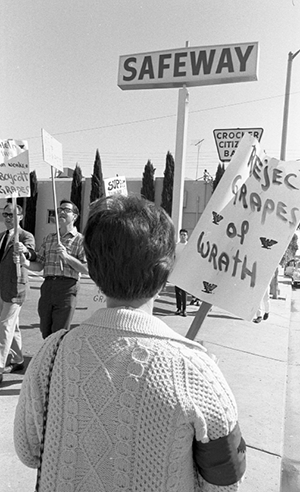About
The farmworker movement of the 1960s and 1970s forged a broad coalition of workers, students, activists, and religious allies that won most of its early battles leveraging its diversity and pushing the country towards a more perfect union. The movement accomplished this not only by extending collective bargaining rights to farmworkers but also by creating "a social movement akin to the abolitionists who appealed to northern consumers not to buy southern-made textiles as a protest against slavery, or that of the Montgomery bus boycotters who asked blacks and white allies not to use public transportation until the segregation of buses ended."1 The diversity of this coalition is reflected in the images taken by young photographers who joined the farmworker movement. These photographers documented it and volunteered their work for the union. That was the case of photographers John Kouns (1929-2019) and Emmon Clarke (1931-). Kouns documented the movement for a decade and was affiliated with the union for more than 40 years. He was committed to photograph and be part of this labor and social struggle while earning a living as a commercial photographer. "Freelancing for food and documenting for the soul," he wrote of his experience with the United Farm Workers union (UFW).2 Kouns was one of a small group of photographers who documented the farmworker movement since its infancy, always from the perspective of somebody openly sympathetic and concerned about injustices. Only he and Jon Lewis photographed the entire 330-mile march from Delano to Sacramento in 1966. Clarke became part of the movement and volunteered his work for the National Farm Workers Association (NFWA, and later UFW). Clarke became photo editor of the union newspaper El Malcriado in 1966–1967 and he documented union activities in the picket line, in meetings, at rallies, and in the labor camps of the San Joaquin Valley.
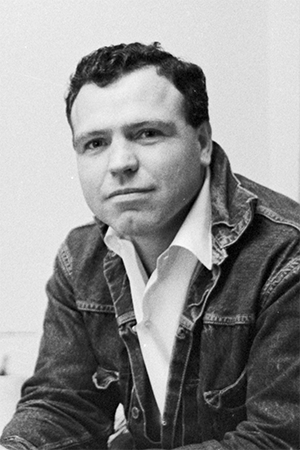
About John Kouns (1929-2019)
John Kouns's photography of seminal moments in American history often appears un-credited in history books and films. He was present at some of the most iconic events of the Farmworker Movement, the Black Freedom Movement, and the Peace Movement in the 1960s and 1970s. His images broaden and deepen our understanding by showing the chorus of voices that created these movements.
Born in Alameda, California, in 1929, John Alexander Kouns grew up in San José. He went into the Navy for two years during the Korean War, and learned photography. In the late 1950s, he studied at New York Institute of Photography, where he met and was inspired by Eugene Smith. After working for a couple of years for the news agency United Press International in San Francisco, he became a successful industrial photographer who practiced, on the side, humanistic documentary photography. He described his approach as "freelancing for food and documenting for the soul."
Starting in the early 60s, Kouns devoted time to document three social movements. In 1963, he traveled to and photographed the March on Washington. Later, while in Birmingham, he photographed the aftermath of the bombing of the 16th Street Baptist Church that killed four young girls. In Selma, he photographed the struggle for civil rights from 1963 to 1965, including two of the three march attempts from Selma to Montgomery. After his work in the South, Kouns drove to Delano and joined the march to Sacramento organized by the National Farm Workers Association. For 300 miles in 1966, he photographed the entire perenigración (pilgrimage). For more than a decade, he continued documenting important events of la causa. Starting in 1967, Kouns also captured some of the major antiwar demonstrations, including one on April 15 in which 100,000 people took part, and at which Coretta Scott King spoke, and another on May 17 at UC Berkeley, at which Dr. King spoke. He also captured images of Muhammad Ali and Black Panthers at a San Francisco rally in 1968 protesting the draft, the Vietnam War, and racism—part of the largest national protest of the war in Vietnam.
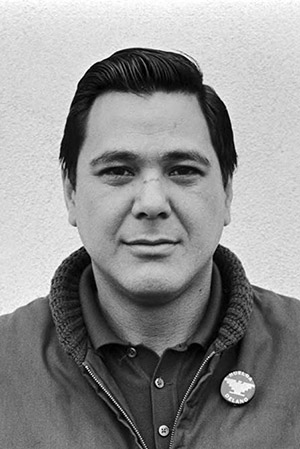
About Emmon Clarke (1933-2022)
Emmon Maika'aloa Clarke was born in Honolulu, Hawaii, of mixed-race parents—Hawaiian/English. He became interested in photography at an early age inspired by images in the magazines Look, Life, and Saturday Evening Post. “I wanted to be one of those guys,” he said. In 1950, He joined the army two weeks before the Korean War started. Later, he built a career in the military. He married his wife, Judith, in 1962, who persuaded him to move initially to Dinuba, California, where she grew up. They lived with her parents for a few months until she got a job as a social worker in Tulare County for a year (1963-64), where they saw the emerging farmworker movement. Because of Judith's work, they moved to Eureka and later to Moran. While they were living there, Emmon decided to visit Delano and explored the possibility of volunteering for the National Farm Workers Association. “I wanted to be part of the movement and use my photography to help,” he recalled.
In his second day as a volunteer, on October 15, 1966, he photographed picketer Manuel Rivera being run over by a truck at the Hourigan-Mosesian-Goldberg Company packing shed in Delano. “I shot it with a 28-millimeter lens. I was running backwards, shooting as it all happened,” he told Richard Street in an oral history interview. That event persuaded him to stay and volunteer as a photographer and later photo editor of El Malcriado for seven months. He documented the union's activities on the picket line, in meetings, at rallies, and in the labor camps of the San Joaquín Valley and briefly in Texas. He also photographed picket and fundraising activities in Los Angeles and in San Francisco. Clarke documented some early performances of El Teatro Campesino, including one in Berkeley. The reality of the social struggle is revealed in Clarke's photographs, and in both the recognizable names and unnamed faces, the viewer sees the toil and toll of protest.
1 García, Mathew. From the Jaws of Victory: The Triumph and Tragedy of César Chávez and the Farmworker Movement. Berkeley: University of California Press, 2012, p. 6.
2 Kouns, John. John Kouns, 1966. Essay for the Farmworker Movement Documentation Project.
https://libraries.ucsd.edu/farmworkermovement/
This project is generously supported by the National Endowment for the Humanities.





